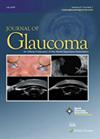Association of Atopic Dermatitis and Risk of Glaucoma Surgery: A Global Population-Based Study
IF 2
4区 医学
Q2 OPHTHALMOLOGY
引用次数: 0
Abstract
Severe atopic dermatitis in glaucoma patients heightens risk of requiring surgical intervention, necessitating prompt specialist care and strict surveillance. Impact of atopic dermatitis (AD) on the prognosis of glaucoma patients is rarely studied. This study aims to assess the risk of requiring glaucoma surgery among glaucoma patients with and without AD. In this retrospective cohort analysis, we assessed glaucoma patients initially diagnosed from December 5, 2003 to December 3, 2018 using the TriNetX database, dividing them into AD and non-AD cohorts. 1:1 Propensity score matching created balanced groups for baseline traits and comorbidities. We compared the cohorts’ risk and cumulative incidence of needing glaucoma surgery (minimally invasive glaucoma surgery, trabeculectomy, aqueous shunt, or transscleral cyclophotocoagulation). A subgroup analysis was also conducted for patients with severe AD. Out of 528,469 glaucoma patients, 2,624 were in the AD group. Among the AD group, 584 had severe AD. The AD group showed a comparable risk of requiring surgery to the non-AD group (Hazard Ratio [HR]: 1.03; 95% CI: 0.72, 1.47). In contrast, the severe AD group demonstrated a significantly greater risk and cumulative incidence of surgery (HR: 2.80; 95% CI: 1.37, 5.73; log-rank P=0.003) compared to the non-AD group. Glaucoma patients with severe AD are significantly more likely to need surgical intervention, with AD severity being a correlating factor for increased risk.特应性皮炎与青光眼手术风险的关系:基于全球人口的研究
青光眼患者如果患有严重的异位性皮炎,需要手术干预的风险就会增加,因此必须及时接受专科治疗和严格监测。 特应性皮炎(AD)对青光眼患者预后的影响鲜有研究。本研究旨在评估有特应性皮炎和没有特应性皮炎的青光眼患者需要进行青光眼手术的风险。 在这项回顾性队列分析中,我们使用 TriNetX 数据库对 2003 年 12 月 5 日至 2018 年 12 月 3 日期间初次确诊的青光眼患者进行了评估,将其分为 AD 和非 AD 队列。通过 1:1 倾向评分匹配,我们创建了基线特征和合并症的平衡组。我们比较了各组群需要进行青光眼手术(微创青光眼手术、小梁切除术、眼球分流术或经巩膜环形光凝术)的风险和累积发病率。我们还对重度 AD 患者进行了分组分析。 在 528,469 名青光眼患者中,有 2,624 人属于 AD 组。在 AD 组中,有 584 人患有严重的 AD。AD组需要手术的风险与非AD组相当(危险比[HR]:1.03;95% CI:0.72,1.47)。相反,与非 AD 组相比,严重 AD 组的手术风险和累积发生率明显更高(HR:2.80;95% CI:1.37,5.73;log-rank P=0.003)。 患有严重AD的青光眼患者需要手术干预的几率明显更高,AD的严重程度是风险增加的相关因素。
本文章由计算机程序翻译,如有差异,请以英文原文为准。
求助全文
约1分钟内获得全文
求助全文
来源期刊

Journal of Glaucoma
医学-眼科学
CiteScore
4.20
自引率
10.00%
发文量
330
审稿时长
4-8 weeks
期刊介绍:
The Journal of Glaucoma is a peer reviewed journal addressing the spectrum of issues affecting definition, diagnosis, and management of glaucoma and providing a forum for lively and stimulating discussion of clinical, scientific, and socioeconomic factors affecting care of glaucoma patients.
 求助内容:
求助内容: 应助结果提醒方式:
应助结果提醒方式:


